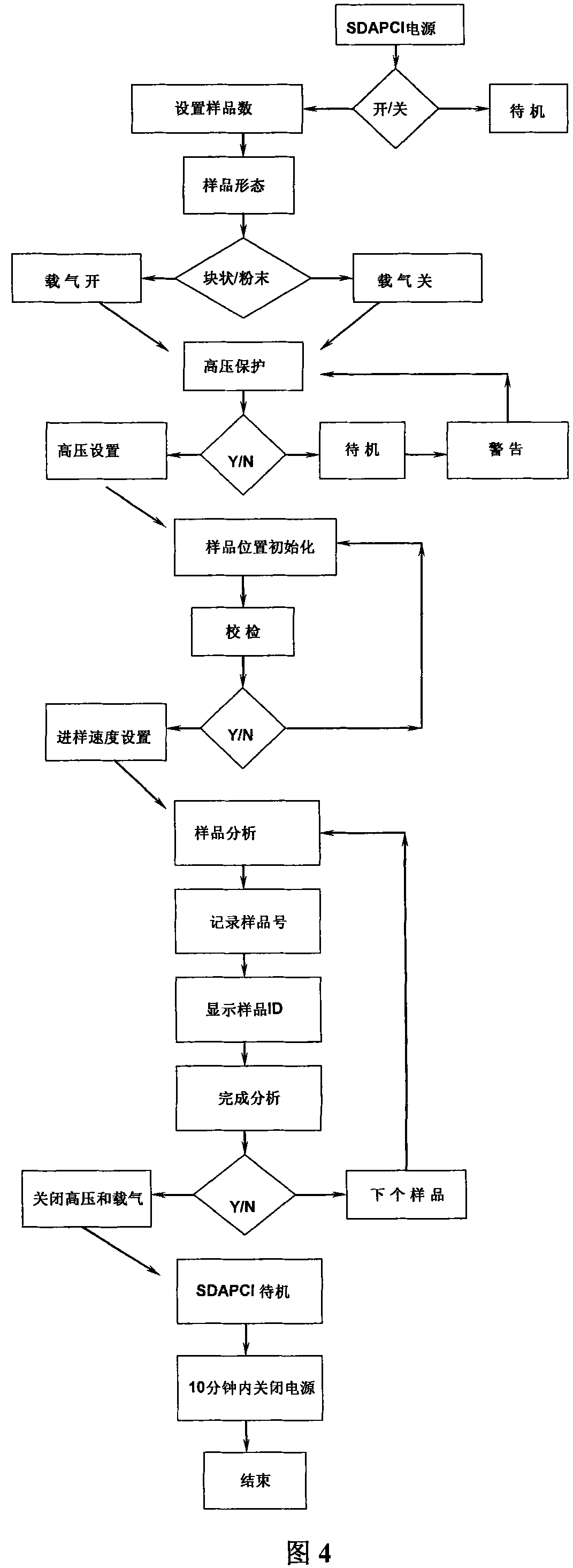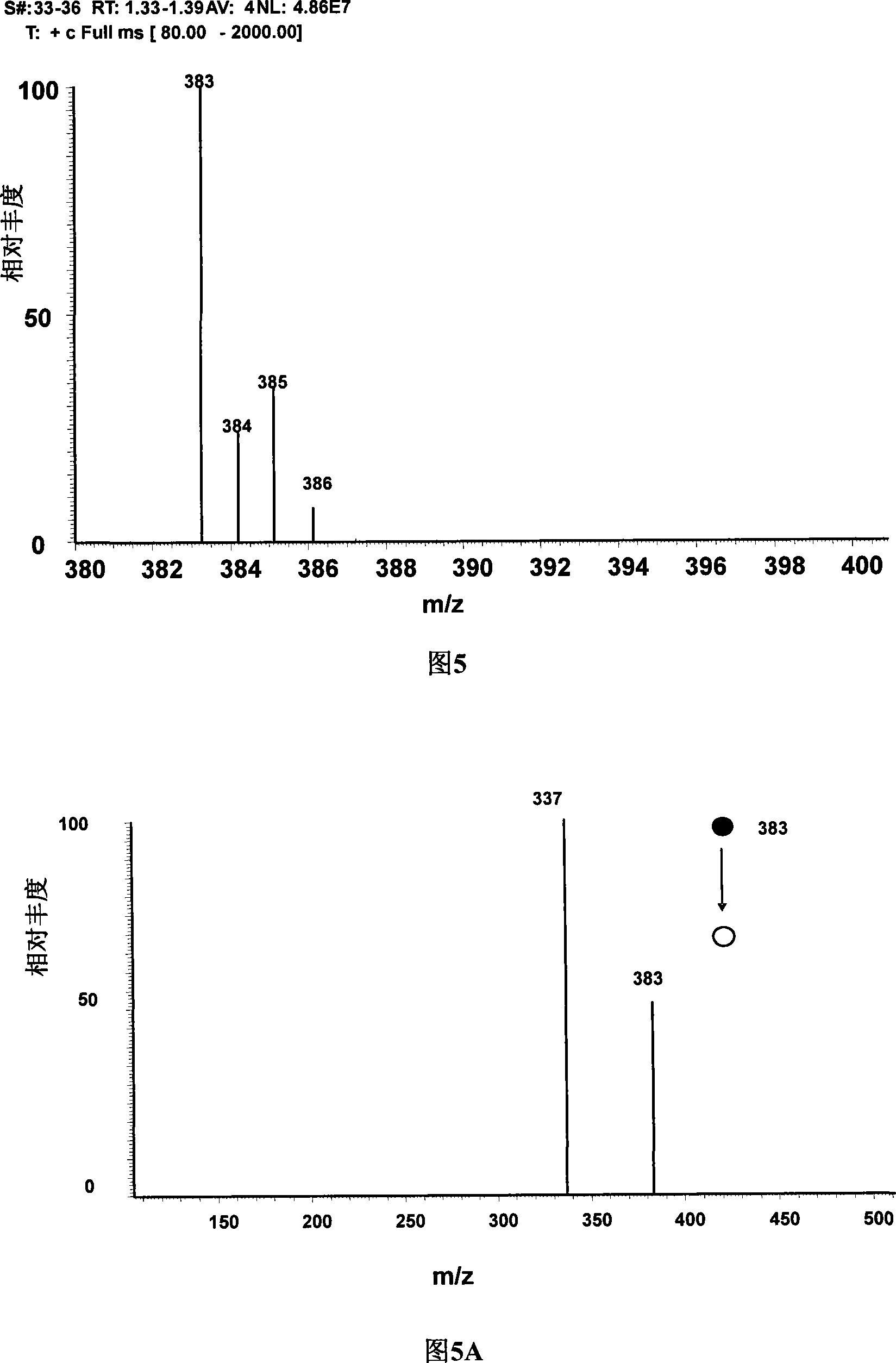Surface desorption atmospheric chemical ionization source of mass spectrometer
A technology of chemical ionization source and mass spectrometer, which is applied in the field of analytical chemistry, can solve the problems of low sensitivity, bulky high-pressure cylinder nitrogen, and inability to powder samples, etc., and achieve the effect of improving sensitivity
- Summary
- Abstract
- Description
- Claims
- Application Information
AI Technical Summary
Problems solved by technology
Method used
Image
Examples
example 1
[0081] Example 1. Determination of Claritin in positive ion mode The active ingredient in the tablet is Loratadine (FW 382)
[0082] The ion source of the present invention was coupled to the LTQ mass spectrometer. During the experiment, the sample Claritin will be detected Place the tablet on the sample tray, adjust the angle between the ion source nozzle and the sample tray to be 45-80°, the angle between the inlet capillary on the mass spectrometer and the sample tray is 5-10°, and the distance from the nozzle to the inlet capillary of the mass spectrometer is 50mm, adjust the parameters of the LTQ mass spectrometer. The chemical ionization reagent is water vapor (water content is 45-60%, nitrogen is used as carrier gas), the pressure is 20psi, and the discharge electrode is added with a high voltage of 3-6KV to detect the sample. The results are shown in Figure 5. Figure 5 shows that the active ingredient loratadine (FW382) in the tablet is very strong (1.16×10 6 ) p...
example 2
[0089] Example 2. Negative ion detection mode
[0090] SDAPCI can also work in the negative ion mode, so that some components in the complex matrix can be transformed into negative ions for mass spectrometry analysis. During the experiment, TNT (MW 227) was selected as the representative of the ionization source parameters in the table below, and the TNT (10pg / cm 2 ) detection capability. Adjust the parameters during detection as follows:
[0091] Mass range Discharge voltage (KV) Capillary temperature (°C) Capillary voltage (V) Reagent gas linear flow rate (m / s) Ion lens voltage (V) Distance between mass spectrometer entrance and sample surface (mm) Distance between discharge needle tip and sample surface (mm) Distance between the discharge needle tip and the entrance of the mass spectrometer (mm) Angle between the discharge needle and the sample surface (α) Angle between the sample surface and the entrance capillary of the mass spectrometer (β)
[0092] The resul...
example 3
[0093] Example 3. Analysis of free radical cations
[0094] In SDAPCI, operations such as replacement of reagents and addition of samples can be easily performed due to the operation under normal pressure. Therefore, for different experimental purposes, the reagents can be easily replaced, so as to better detect the analytes in complex collective samples. Experiments show that if the air is replaced by argon, SDAPCI-MS detection can also be performed. When argon does not contain active reagents such as water molecules, a considerable abundance of free radical cations can also be obtained.
[0095] In the experiment, a paracetamol sample was used to obtain a corresponding mass spectrum in an argon atmosphere (as shown in FIG. 10 ). Paracetamol is the predominant free radical cation (m / z 151). Due to their high energy, free radical cations are very active and can be rapidly broken down into smaller fragments. Therefore, in the MS spectrum, in addition to the base peak m / z 151,...
PUM
| Property | Measurement | Unit |
|---|---|---|
| diameter | aaaaa | aaaaa |
Abstract
Description
Claims
Application Information
 Login to View More
Login to View More - R&D
- Intellectual Property
- Life Sciences
- Materials
- Tech Scout
- Unparalleled Data Quality
- Higher Quality Content
- 60% Fewer Hallucinations
Browse by: Latest US Patents, China's latest patents, Technical Efficacy Thesaurus, Application Domain, Technology Topic, Popular Technical Reports.
© 2025 PatSnap. All rights reserved.Legal|Privacy policy|Modern Slavery Act Transparency Statement|Sitemap|About US| Contact US: help@patsnap.com



